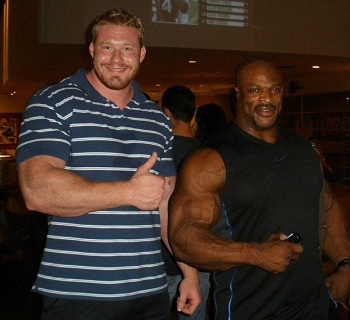Remember the other day when I was bitching about how the actors in Thor and Conan could be bigger? Well, then Paul S. sent me some information on Urbank and things got real. Real real.
Turns out Vince is a big mother trucker, and he kinda looks like the little dude who played Thor.
(By the way, the average guy in Australia is smaller and weaker than in America. Strength training is less popular there than it is here, and endurance training is what is en vogue. I’m not really a big guy and I stood out in most places. That must be why the media got all excited when Chris Hemsworth gained a couple of kilos to not be such a girly man. I’ll never understood why they cast him in the first place.)
What I’m trying to say is that Urbank should have been Thor, because a 7 foot tall muscular 300 pounder is definitely what I imagine when I think Mjölnir.
Urbank is a strongman competitor who just received his pro card in the American Strongman Corporation. The former Marine trains powerlifting-style and doing extremely well:
Here’s a video of him doing a strongman comp and another ripping a phone book in half. I’ve been told he’s 23 years old (although I haven’t seen that officially), is in PT school, and aims to continuously improve in strongman. Hopefully we’ll see him at the big show some day. Click here for an interview with Vince.

Update: Vince is competing in the America’s Strongest Man competition in the ASC this weekend (Kevin Nee will be there). Good luck, Vince.
He’s sort of agreed to an interview after this competition, so post your questions for him in the comments.


